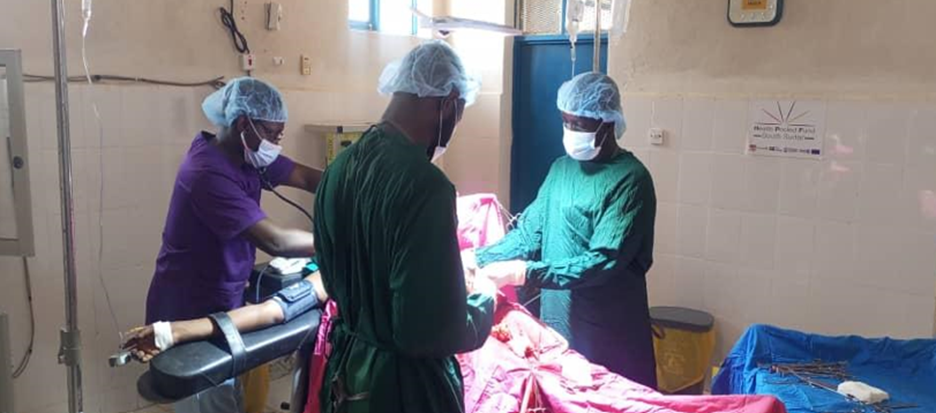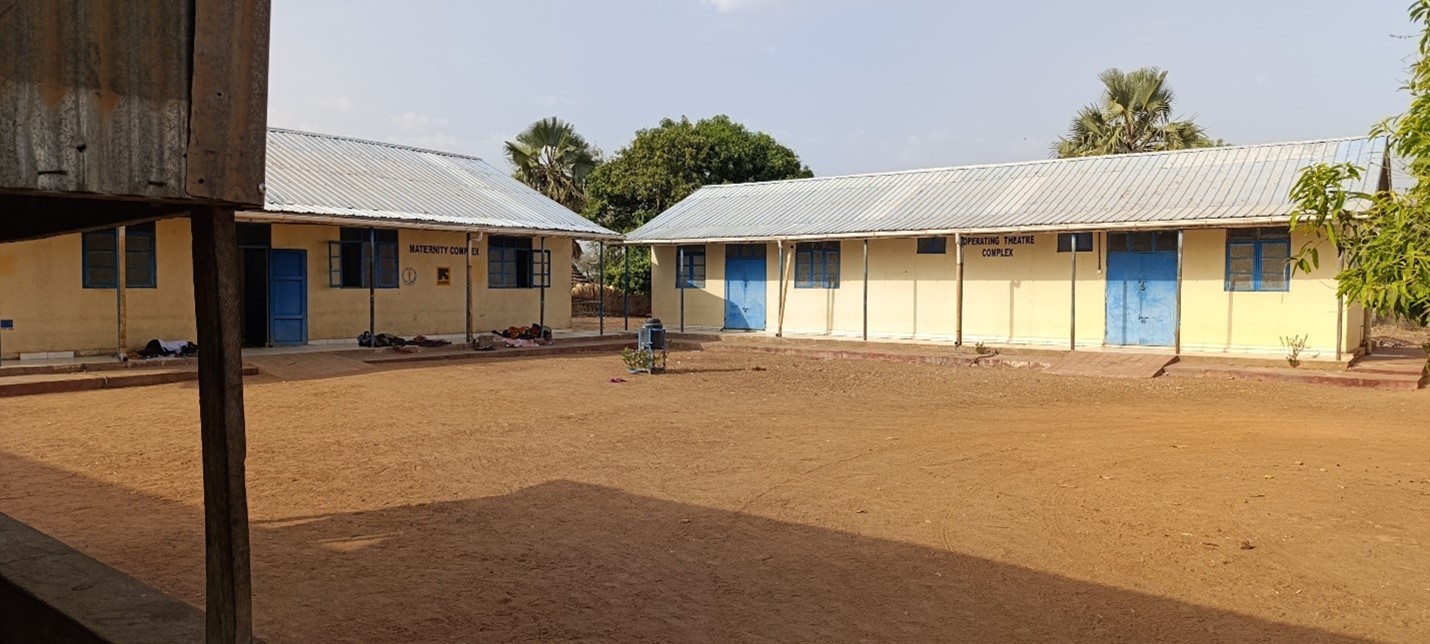
A surgical team performing a lifesaving surgery in Malualkon hospital- Aweil East County.
In South Sudan, neonatal mortality remains a significant concern, with stillbirth rates estimated at over 30 per 1,000 births. The Malualkon hospital, in Aweil East County, Northern Bahr el Ghazal State has its fair share of grim.
Fortunately, it is the occasional stories of survival in dire situations that makes a profound impact on the community and builds people’s trust in the healthcare system as well as partners such as the health cluster. This was the case when the medical team at Malualkon Comprehensive Emergency Obstetric and Newborn Care (CEmONC) Center successfully performed a lifesaving surgery therefore demonstrating how critical it is to have trained health workers in resource-constrained settings.
The Health Cluster in South Sudan, a partner coordination mechanism led by the World Health Organization (WHO), is committed to provide the kind of technical support that makes a difference in places with inadequate access to skilled birth attendants, limited emergency obstetric care, and insufficient medical supplies such as Malualkon. The technical support is provided through implementing partners like the International Rescue Committee (IRC) to strengthen and ensure quality of care for women of reproductive age in need of the critical services.
A Battle for Survival: The case of a mother in critical condition

Malualkon County Hospital operating theatre
A young woman experiencing prolonged labor was referred to Malualkon CEmONC Center from a lower-level health facility. The woman had already suffered an intrapartum stillbirth- the death of a fetus that occurs after labor has started and before the baby is delivered. Upon arrival, an emergency Caesarean section was performed by a medical officer, assisted by the theater team.
The operation revealed a child with tissue breakdown also referred to as a macerated stillbirth. The woman developed uterine atony - a failure of the uterus to contract - which led to excessive hemorrhage. Despite multiple doses of uterotonic drugs such as oxytocin, the bleeding persisted, placing her life at imminent risk.
Given the severity of the situation and the limited options available, the medical team made a tough call. Permission was secured from her family to remove the uterus using the tools at disposal. Against all odds, the procedure was a success, saving the mother’s life.
Mr. Akuol Dengthe, father of the young woman was relieved to hear that the procedure was successful. He battled with emotions as he thanked the surgical team for saving the life of his daughter. “I thought I had lost my daughter in addition to losing a grandchild. I cannot thank you doctors enough for saving her life. No parent should outlive their children,” said Mr Dengthe.
This experience is a powerful reminder of the importance of access to health facilities. Traditional Birth Attendants (TBAs), while essential in many communities, are often unable to manage complications that arise during home deliveries.
Dr. Mathew Kelion, the IRC Deputy Health coordinator attributes the reduction of excess morbidity and mortalities especially among the women and children to joint efforts from partners. “Coordinated efforts by partners under the Health Cluster in providing not only technical support but also emergency kits have significantly improved the quality of care though in the resource limited context,” said Dr. Kelion.
Continuous coordinated efforts by the Health Cluster to provide both technical support and emergency kits are imperative. These actions will significantly improve the quality of care in the resource limited context, ultimately reducing preventable morbidity and mortalities especially among women and children.
About the Health Clusters
Health Clusters exist to relieve suffering and save lives in humanitarian emergencies, while advancing the well-being and dignity of affected populations. Currently there are 29 Health Clusters/Sectors, of which 2 are regional coordination mechanisms. These Health Clusters/Sectors are working to meet the health needs of millions of people worldwide. The World Health Organization is the Cluster Lead Agency and provides secretariat support.
